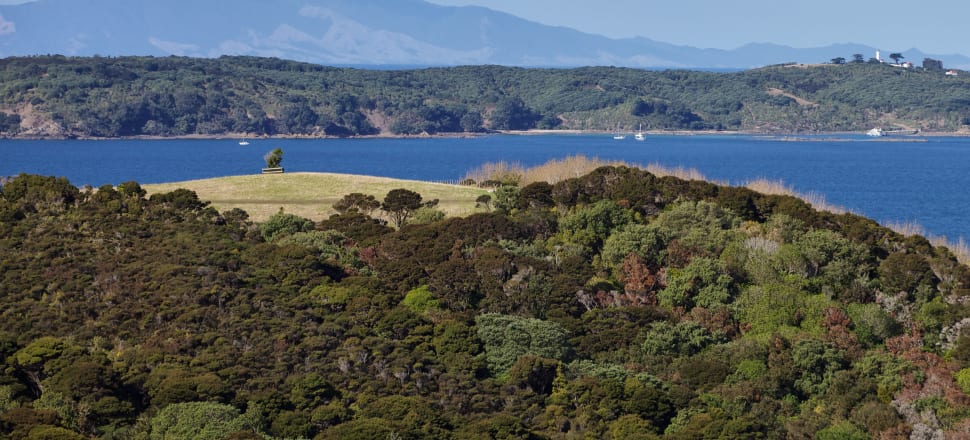
The frequency and intensity of fires in New Zealand are likely to increase as a result of climate change, making vegetation more likely to ignite because introduced plants such as gorse, eucalypts and pines are more flammable
Opinion: Four weeks have passed since the world’s leading ecologists warned of one of the costliest developments in the world invasive species. Yet this issue hasn’t featured in the political campaigns in Aotearoa New Zealand.
It’s estimated invasive species cost $400 billion globally each year, and potentially over a trillion dollars each year. That is more than the cost of all natural disasters each year. The relentless spread of invasive species at an alarming rate are threatening nature, food security, our economies, and human health.
READ MORE:
* Up high, plants face a perilous future
* How to stop this ‘weapon of mass extinction’
* NZ needs to show same leadership in biodiversity as climate crisis
The ecosystems of Aotearoa New Zealand are particularly vulnerable, as many of our native species have no defence against these foreign arrivals. You are likely aware of the havoc wreaked by rats, stoats, ferrets and possums on our native flora and fauna, but may not be so familiar with the damage done by exotic plants. The recent unwelcome arrival of invasive Caulerpa seaweeds, is one harbinger of our growing crisis. These seaweeds are forming dense mats, smothering native marine plants, reducing nursery habitat for fish, and blocking fish from finding their food.
We have, with considerable and concerted effort, helped some of our more charismatic species, such as kiwi, to recover from near extinction, but many remain vulnerable, particularly species with a much lower profile, such as the highly endangered and globally unique Archey’s frog. An invasive fungus and mammalian predators have all played a role in its decline.
With sound resources, policies, practices, and management, we could restore our natural environment, and protect our native species from the destructive impact of exotic flora and fauna
The Government has acknowledged the dire state of ecosystems and biodiversity in its Environment Aotearoa reports, noting that almost 4,000 native species are threatened or are at risk of extinction (2019, 2022): 90 percent of seabirds, 80 percent of shorebirds, 26 percent of native marine mammals, and nine percent of sharks, rays, and chimaeras. Some, such as the Māui dolphin are in more dire condition with some 55 individuals over the age of one year remaining, and 59 bird species, three frog, two reptiles, four insects and seven plant species have become extinct, according to Department of Conservation documents.
These losses are disastrous beyond mere numbers. Each species is part of a complex ecosystem, and their ability to thrive depends on co-habiting with other indigenous species, the plants, animals and other living things that have evolved together in their habitats. Their interactions prop up entire ecosystems that sustain all of life. For example, many plants have specialist pollinators or seed dispersers, without which they can’t exist. Rhabdothamnus, a native understorey shrub, relies on bellbirds and stitchbirds for pollination. Where these birds are absent, then the plants fail to be pollinated and eventually the density of these plants declines.
Of course not all declines and extinctions are because of invasive species alone, but arise from a combination of climate change, land use changes that alter, pollute, and destroy habitat. Their decline is also because of inadequate policy, management and oversight. In Canada, although wildfires are a natural part of their landscapes, climate change and poor forest management resulted in flames burning through vast areas of forest, releasing massive carbon emissions and threatening many other species. This year has seen earlier and more extensive wildfires surpassing all previous records.
Invasive species compound the disasters resulting from climate change. The recent fires in Hawaii that burned 3200 acres of land and killed at least 115 people (more than any wildfire in modern US history) resulted from a combination of non-native, highly flammable invasive grasses and a climate change-driven drought.
Similarly, the frequency and intensity of fires in New Zealand are likely to increase as a result of climate change when extreme heat and drought make vegetation more likely to ignite. This interacts with introduced plants such as gorse, eucalypts and pines that are more flammable than most of our native plants.
When there are fires, these flammable species can reestablish more rapidly than most of our native plants, ultimately creating a vicious circle – leading to our land being covered with a community of plants adapted to fire.
With sound resources, policies, practices, and management, we could restore our natural environment, and protect our native species from the destructive impact of exotic flora and fauna. The island of Tiritiri Matangi, just off the Auckland coast, offers a small example of what could be possible. Beginning in the 1980s and 90s, invasive species were eradicated, many of our most endangered and rarest native bird species were reintroduced and, crucially, the community stepped in to replant the native vegetation.
This kind of restoration works well on offshore islands, but scaling up to mainland New Zealand remains a major challenge. Finding ways to control well-established invasive species across larger areas would be a major breakthrough, but we also need to slow the arrival and establishment of new invasive species. We have more than enough problems to cope with already. Addressing these concerns does mean dreaming big, but concerted efforts and cooperation across our politics, policy, research, and resources will allow us to take some steps in the right direction. Our political parties could at least be talking about what they plan to do about protecting the flora and fauna that got here well before any of us.
Authors: Dr Maria Armoudian, Politics and International Relations, University of Auckland, Professor Jacqueline Beggs, School of Biological Sciences, University of Auckland, and Associate Professor Al Glen, School of Biological Sciences, University of Auckland







